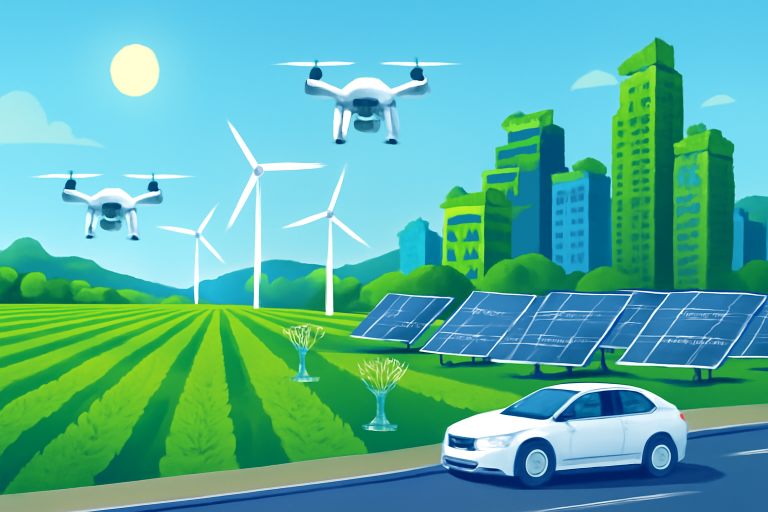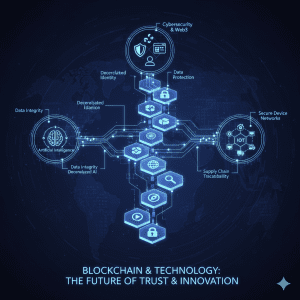Introduction
As climate concerns intensify, 2025 marks the dawn of Green Revolution 2.0—an era where breakthrough climate innovations are not just trends, but necessities for a sustainable tomorrow. From air-scrubbing machines to AI-driven agriculture and clean energy, these technologies are rapidly shaping a future where humanity and nature thrive together.
Key Climate Innovations Shaping 2025
1. Advanced Carbon Capture and Utilization
-
Direct Air Capture (DAC): Next-gen systems pull CO₂ straight from the air for permanent storage or transformation into building materials and fuel.
-
Carbon Mineralization: Technologies are locking away captured carbon as stone, ensuring lasting impact.
-
Negative Emissions: BECCS (Bioenergy with Carbon Capture and Storage) plants combine renewable energy with CO₂ removal for net-negative emissions.
2. AI and Data-Driven Sustainability
-
Resource Optimization: AI controls energy flow in grids, predicts equipment failures, and boosts renewable use.
-
Climate Risk Analytics: Platforms analyze weather and sensor data for forecasting, disaster prediction, and environmental monitoring.
-
Precision Farming: Advanced AI helps farmers optimize input, reduce waste, and increase resilience against climate risks.
3. Revolution in Renewable Energy and Storage
-
Floating Solar Farms & Offshore Wind: Clean power expansion without occupying valuable land.
-
Solid-State & Grid-Scale Batteries: Ensure renewable energy is available around the clock.
-
Green Hydrogen: Renewable-powered hydrogen replaces fossil fuels in heavy industry and shipping.
4. Regenerative and Precision Agriculture
-
Gene-Edited, Climate-Resilient Crops: New crop varieties tolerant to drought and heat secure food supplies.
-
Regenerative Practices: Adoption of cover crops and crop rotations balances soil, water, and carbon cycles.
-
Digital Transformation: Drones, IoT sensors, and real-time data maximize yield while conserving resources.
5. Circular Economy & Green Materials
-
Circular Marketplaces: Platforms for trading and reusing materials encourage a zero-waste culture.
-
Bioplastics & Sustainable Packaging: Startups are replacing petroleum plastics with biodegradable alternatives.
-
Battery Recycling: New processes reclaim critical materials from used EV and grid batteries.
6. Smart Water Management
-
IoT-Based Water Conservation: Sensors monitor usage, helping maximize efficiency and minimize waste even during droughts.
-
Innovative Water Technologies: Energy-efficient desalination and advanced filtration provide clean water in arid zones.
7. Clean Mobility & Electrification
-
Electric Vehicles (EVs): Widespread e-bus, e-bike, and delivery vehicle adoption is transforming urban air quality.
-
Smart Charging Networks: AI-managed systems predict demand, optimize routes, and power greener transportation.
-
Alternative Fuels: Green hydrogen and advanced biofuels are decarbonizing heavy transport sectors.
8. Blockchain for Transparency
-
Carbon Credit Markets: Blockchain technology secures carbon trading and supply chain sustainability with transparent records.
Table: Top Climate Innovations & Examples for 2025
| Innovation | Example/Application in 2025 | Impact |
|---|---|---|
| Direct Air Capture | Climeworks DAC plants | Achieving negative emissions |
| AI for Climate Action | Smart energy grid management (AutoGrid) | Lowered energy waste, higher reliability |
| Solid-State/Grid-Scale Batteries | Tesla Megapack, next-gen storage | Reliable renewable energy, grid stability |
| Precision & Regenerative Farming | CRISPR drought-resistant crops, soil carbon tech | Higher yields, resilient agriculture |
| Circular Economy & Battery Recycling | Green packaging, EV battery repurposing | Waste reduction, resource reuse |
| Green Hydrogen | Hybrit zero-emission steel | Decarbonizing heavy industry |
| Green Mobility/Smart Transport | Electric fleets & battery swap stations | Cleaner cities, decarbonized logistics |
| Blockchain for Climate Markets | Carbon credit platforms | Transparency and efficiency in trade |
Conclusion
Green Revolution 2.0 in 2025 is unleashing a powerful wave of innovations, reshaping energy, food, transport, and industry. From carbon-negative machines to AI-managed smart grids and sustainable materials, these solutions are leading the charge for a cleaner, fairer, and more resilient planet. The revolution is here—building a sustainable future has never been more possible or more urgent.
FAQ: Green Revolution 2.0 and Climate Innovation
Q1: What is Green Revolution 2.0?
A: It refers to the latest wave of technology-driven transformations to address climate change, focusing on sustainability, clean energy, smart agriculture, and resource efficiency.
Q2: What role does AI play in climate innovation?
A: AI optimizes grid management, resource use, weather predictions, agriculture, and monitoring of environmental impacts.
Q3: How do circular economies help the environment?
A: They promote reducing, reusing, and recycling materials, thereby minimizing waste, conserving resources, and lowering emissions.
Q4: Are these innovations already being used?
A: Yes, many are already deployed globally, with expanding adoption expected through 2025 and beyond.
Q5: What’s the main focus keyword for this blog?
A: Green Revolution 2.0











